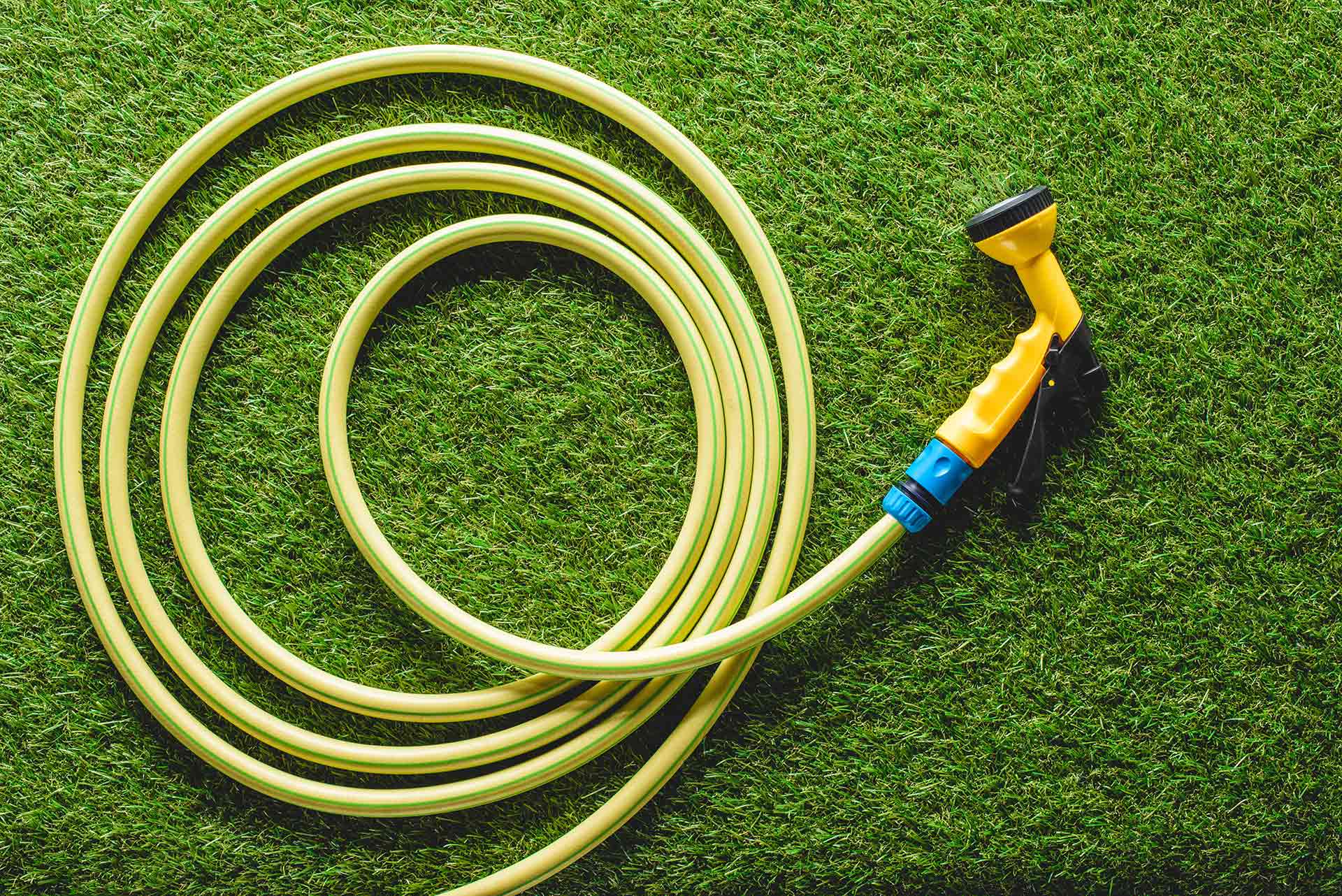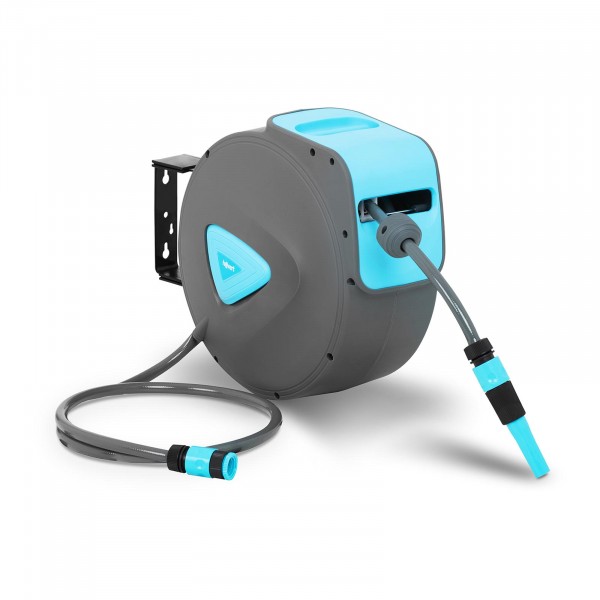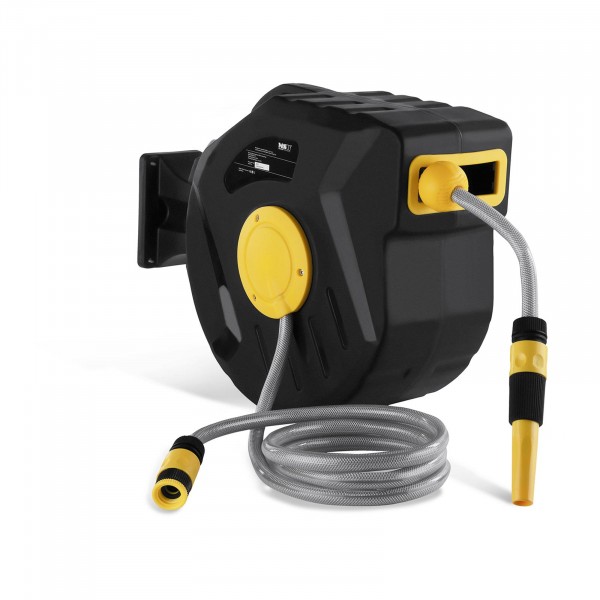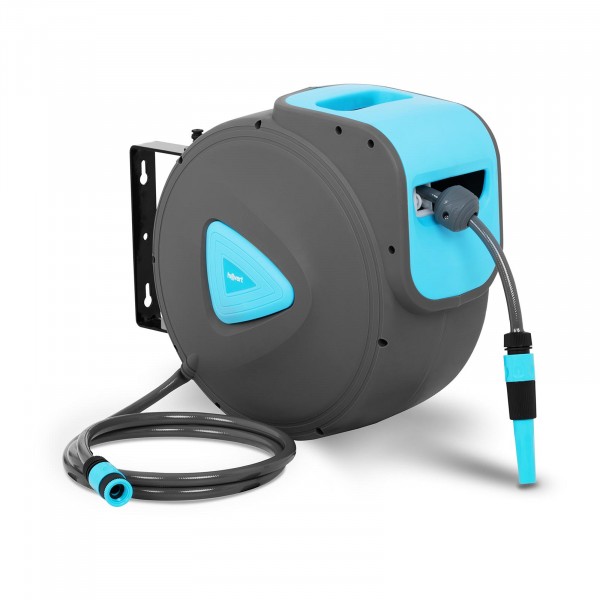Choosing the right garden hose is a common dilemma for many people each spring. This should come as no surprise, as it is one of the most important things in many gardens. So what should you pay attention to when buying a garden hose? Read on to find out.

Choosing the right garden hose is a common dilemma for many people each spring. This should come as no surprise, as it is one of the most important things in many gardens. So what should you pay attention to when buying a garden hose? Read on to find out.
Which hose should you choose?
Garden hoses are extremely useful tools, irreplaceable in most gardens. They can be used not only for irrigation, but also for cleaning your driveway or terrace. Therefore, try to choose a hose that will last more than one season. What kind of garden hose should you buy and what should you pay attention to?
Length of the garden hose
The basic parameter to consider above all is its length. If you choose one that is too long for your needs, it will often get tangled under your feet and take much longer to wind back into the reel. On the other hand, too short a hose will mean you cannot reach the places you want to water.
So in order to choose the optimal length, measure the distance from the tap to the farthest point of the garden and add approx. 5-10 feet. These additional feet are added due to obstacles such as trees, flower pots, decorations or garden furniture that you may encounter during watering.
If you need a very long hose, finding the right reel can be a challenge. For this reason, the best option would be a flexible hose that extends under increased water pressure.
Garden hose diameter
The diameter depends mainly on the number of layers forming the walls of the hose. The more there are, the thicker and more durable the hose will be. You will find hoses with 1-2 layers and even 3-5 layers. Most often they are made of polyvinyl chloride, but you can also find more durable synthetic rubber hoses with reinforcing fibres.
The number of layers and the material used affect the tendency of the hose to get twisted, as well as resistance to high and low temperatures. It is also worth checking if the material appropriately blocks sunlight, as this could lead to the growth of algae.
A thin or thick hose – which one should you choose? This is closely related to its length and the area you want to water. For larger gardens a thicker hose would be recommended. The standard diameter is half an inch. Multi-layer models come in 3/4, 1 or even 5/4 inch sizes. Thicker hoses will also weigh more and be more difficult to move around.
The resistance of the hose to pressure
The value of the working pressure is an very important parameter that determines whether the hose will provide optimal flow. It is usually 4-12 bar. Another aspect is the maximum burst pressure, and crossing it may damage the hose. Therefore, check this information carefully. The burst pressure is usually from 8 to 48 bar, depending on the diameter of the hose.
 Automatic Water Hose Reel – 15 + 1.5 m |  Retractable Hose Reel – 20 m |  Automatic Water Hose Reel – 30 + 2 m | |
| Hose length | 15 + 1,5 m | 20 + 2 m | 30 + 2 m |
| Operating pressure | 8 bar | 8 bar | 8 bar |
| Thread types | 3/4″ | 3/4″ NPT/BSP | 3/4″ |
| Temperature range | -5 to 45°C | -5 to 45°C | -5°C to 45°C |
| Dimensions (LxWxH) | 46,50 x 19,00 x 35,50 cm | 18,50 x 51,00 x 34,50 cm | 51,50 x 22,50 x 41,00 cm |
| Weight | 5,60 kg | 6,30 kg | 10,50 kg |
Hose accessories
The garden hose alone is not enough to use its full potential. You will also need basic accessories, such as:
- a tap connector – for quick and convenient connection of a garden hose to the water system,
- a spray tip with adjustable spray width, letting you obtain a delicate mist for sprinkling plants or a strong stream for cleaning,
- a spray gun – its special trigger allows you to quickly and conveniently turn the water stream on and off,
- quick couplings and a 2-way hose connector – these will let you quickly join shorter hoses together into one longer hose if necessary.
The above-mentioned accessories are irreplaceable when creating a lawn watering system. If you want to find out more about planning garden irrigation, read our article on this topic.
Which garden hose will work best with a pressure washer?
Pressure washers are becoming increasingly popular for home use in the garden. They are mainly used for washing cars, buildings or driveways from mud, dust or other more stubborn dirt. However, they need access to water, which is supplied by a garden hose.
Before you connect the hose to the washer, check what connection is needed. You will usually need a 1/2″ connection, but there are models designed for connections with 3/4″. Due to the fact that these machines are usually moved around during use, it is best to use a flexible garden hose. Ideally you should also use special filters that catch sand particles and other impurities that could damage the machine pump.
How to store a garden hose?
Whichever garden hose you choose, storing it can be problematic. Left unfolded on your lawn, you risk tripping over it or damaging it with your lawnmower. Therefore, properly storing the hose is very important. There are several ways to do so:
- wall hangers – these allow you to conveniently hang the hose on the wall of any building. Such hangers are relatively small and easy to install.
- retractable hose reels – they make storing the hose much easier. The special mechanism lets you to pull the hose to the appropriate length, and then automatically winds it back on the reel. Like hangers, they are mounted on walls.
- hose carts – these are particularly useful in large gardens. They allow you to conveniently move the wound-up hose wherever you want. They also prevent the hose from twisting when stored. Depending on the model, they can be automatic or with a manual lever.
You can keep your garden hose on one of the above choices of equipment for most of the year. However, do not leave it outside during winter or sub-zero temperatures. Before storing the hose for winter, make sure you pour out any water from inside the hose, as ice would then break the hose making it useless. Once you’ve removed the water, store the hose in your garden shed. If you do not have one, read our article about how to build one yourself.
Which garden hose should you buy – summary
Although choosing a garden hose seems easy, it is worth spending a moment to make sure you choose the right one. Check what length will be appropriate for your garden, what thickness it should have and which accessories you will need. Remember to store your garden hose properly so that it lasts for many years to come.
Also check out our other articles related to gardening. Among them you will find a guide to properly trimming hedges.






Share